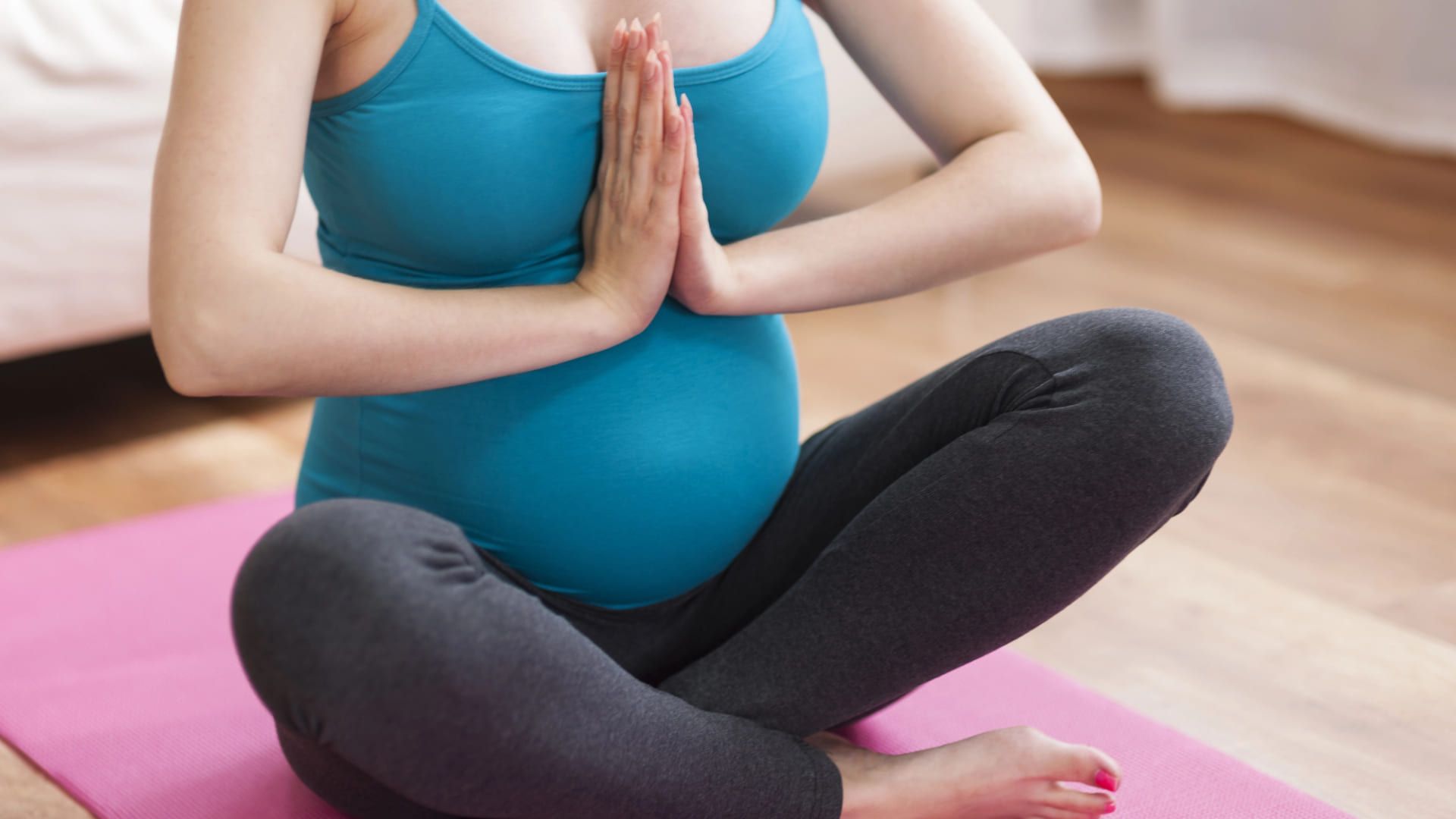Prenatal Yoga Benefits and Practices

Sarah Johnson, MD

It's a good idea to be active during pregnancy if your doctor gives you the all clear. It can relieve discomforts like constipation and back pain and lower your risk of problems like preeclampsia.
Are you trying to find a way to exercise while pregnant? Given all of its advantages, prenatal yoga—yoga that has been adjusted for pregnancy—might be the ideal activity to take up.
What Happens in a Prenatal Yoga Class?
Along with grabbing a mat, here’s what to expect during a prenatal yoga class:
- Breathing exercises
- Stretching
- Yoga poses that are safe for pregnancy
- Cool down stretches and relaxation
better with Soula

Support for every woman:
✅ A Personalized Plan to reduce anxiety and overthinking
✅ 24/7 Emotional Support whenever you need it Cycle-Aligned Mental Health Tracking — monitor your mood and symptoms in sync with your period
✅ Real-Time Insights into your energy levels and emotional state
✅ Bite-Sized Exercises to help you return to a calm, balanced state — anytime, anywhere
Benefits of Prenatal Yoga
Pregnant women can benefit from antenatal yoga's physical and mental health benefits. These are a few that you should be aware of.
Tones your muscles — movements such as lunges and gentle backbends help maintain tone in the hips, pelvic floor, and abdominal core. They can also ease the aches and stiffness common in the second trimester, which many describe in discussions of relieving back pain in pregnancy.
Prepares the body for labor and delivery — prenatal yoga teaches how to work with breath and stay connected to the body. Many women complement this with techniques similar to those explored in breathing exercises for pregnancy.
Helps with common pregnancy complaints — by supporting circulation and improving oxygen intake, yoga may ease headaches, nausea, back discomfort, and even sleep disturbances. Some women also explore routines for more restful nights based on sleeping tips during pregnancy.
Boosts mental health — movement and mindful breathing help ease emotional tension. Gentle techniques like grounding and rhythmical breathing, similar to those used in vagus nerve–based breathing practices, can support emotional steadiness.
Promotes a healthier pregnancy — yoga supports endurance, flexibility, and stable blood pressure. This becomes especially relevant as the body begins its mid-pregnancy changes, often described in guides to what happens in the second trimester.
Can improve sleep — using both physical and mental energy can help the body settle more easily at night.
Creates a much-needed community — connecting with other pregnant people offers emotional reassurance and shared understanding.
What Trimester Should You Do Prenatal Yoga?
As long as your healthcare practitioner gives the go-ahead, you can begin practicing prenatal yoga in any trimester. As your belly grows or symptoms shift, gentle modifications may help keep movements comfortable.
Safety Guidelines for Prenatal Yoga
It's crucial to stay away from heated yoga sessions when expecting. Overheating during pregnancy raises the chance of complications, and dehydration may worsen symptoms.
A few additional points to consider:
- Don’t overdo it. Even short sessions count — listen to your body.
- Watch your poses. Avoid lying flat on your stomach or back after mid-pregnancy; use props for support. Skip deep forward or back bends and avoid pressure on the abdomen.
- Drink water. Staying hydrated is essential, especially when exercising.
The most important thing is to speak with your doctor before beginning prenatal yoga and to tell them about any discomfort afterward.
Where To Do Prenatal Yoga
You can follow online videos or take in-person classes at a studio or fitness center. An experienced prenatal yoga instructor can help you practice safely and adapt poses as your body changes.
For emotional grounding alongside physical practice, some women also lean on supportive tools like Mental Health AI, which offers gentle guidance throughout pregnancy.














